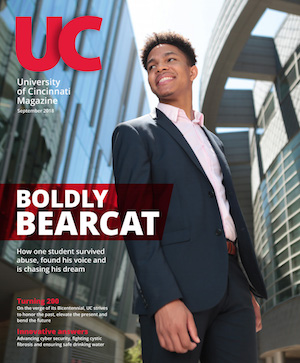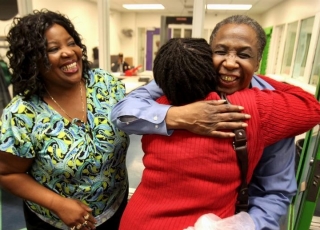Innocence Project helps free 13th inmate
Read of him receiving $13.21 million for wrongful imprisonment.
by Deborah Rieselman
After steadfastly claiming his innocence of a 1999 murder for more than a decade, David Ayers tearfully left Cuyahoga County Courthouse as a free man on Sept. 12, 2011, thanks to the help of University of Cincinnati law students who were on hand to celebrate his emotional release.
In 2000, Ayers was convicted of murdering a 76-year-old woman who lived in the public-housing complex where he had been employed as a security guard. He was sentenced to life in prison without parole for aggravated murder, aggravated robbery and aggravated burglary.

 Past Issues
Past Issues